Rock Stars: University's Mining and Mucking Teams Strike Gold at Collegiate World Championships in England
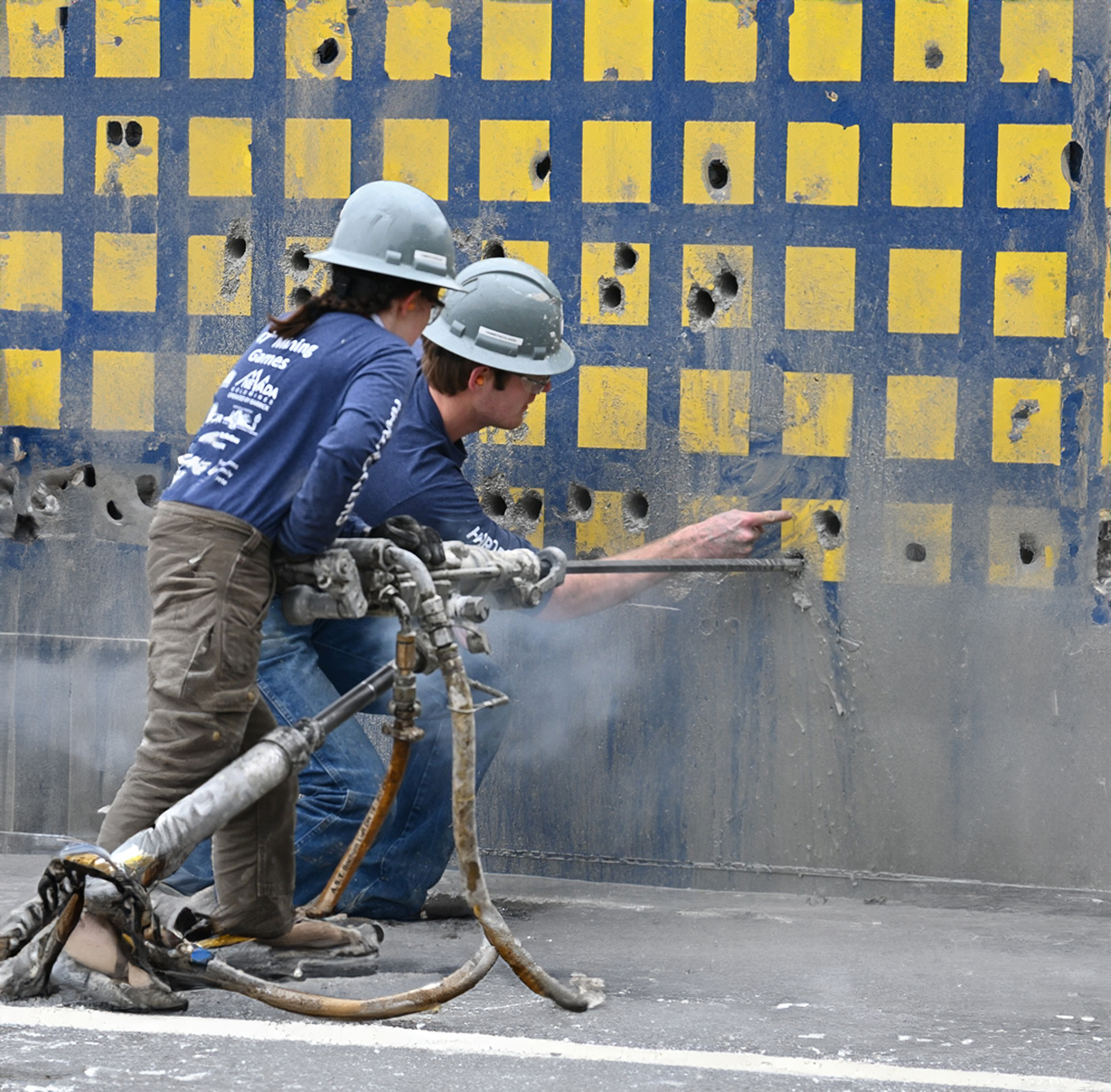
There is no AI or machine learning, and the vehicles are far from autonomous. Instead, it is a trip back into the old-fashioned mining days and the raw determination that went with it.
It is that same determination, hours of practice and camaraderie that fueled the passion and victory of the South Dakota Mines Mining and Mucking Teams at the 47th Annual International Collegiate Mining Competition last month in Camborne, England.
Mines took three teams, including an alumni group, who placed first in the co-ed and alumni contests and eighth out of 17 teams in the men’s highly competitive division. A total of 45 teams from the United States, Australia, Canada, Germany and England participated in the competition.
“All of us worked hard to gain the skills and strength needed for the competition,” said Tamsyn Kockler, a freshman computer engineering major whose parents both competed on the university’s mining team as students. “I am very proud of the entire team for the dedication we have put towards achieving what we have.”
What the Muck is This All About?
The mining games incorporate historical mining methods and practices, many of which were employed in the Black Hills following the 1876 gold rush. Skills demonstrated at the annual games include operating a pneumatic drill called a jackleg, hand steel, using a hammer and set of chisels to drill holes for explosives, and swede saw; mucking, the original method used by miners to shovel ore or “muck” into a cart after it was blasted out of the mine walls; mine surveying; gold panning; and track standing which requires contestants to erect a section of railroad track.
The competition's ”muck” and equipment reflect the host institution's location.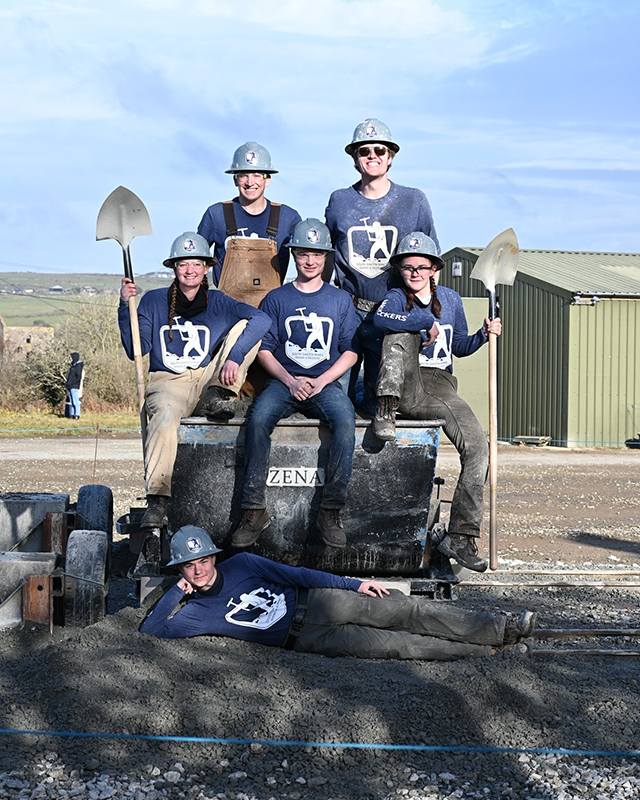
“Most schools try to match the muck with what historically they mined. When Kentucky hosted it, the muck was coal since that is what they mine,” said Will Ford, a sophomore mechanical engineering major and captain of the men’s team.
The first day of competition allows participants to get familiar with the unique equipment before the games begin.
The coed team, Hammerschlagen 2.0, placed first overall but also first in jackleg, track stand, and swede saw; second in mucking; and third in hand steel.
The men’s team, Holy Terrors, placed second in mucking and third in surveying, the hardest of the competitions, with teams within a hundredth of an inch of each other.
“That was a really cool moment,” Ford said of the men’s top three finish.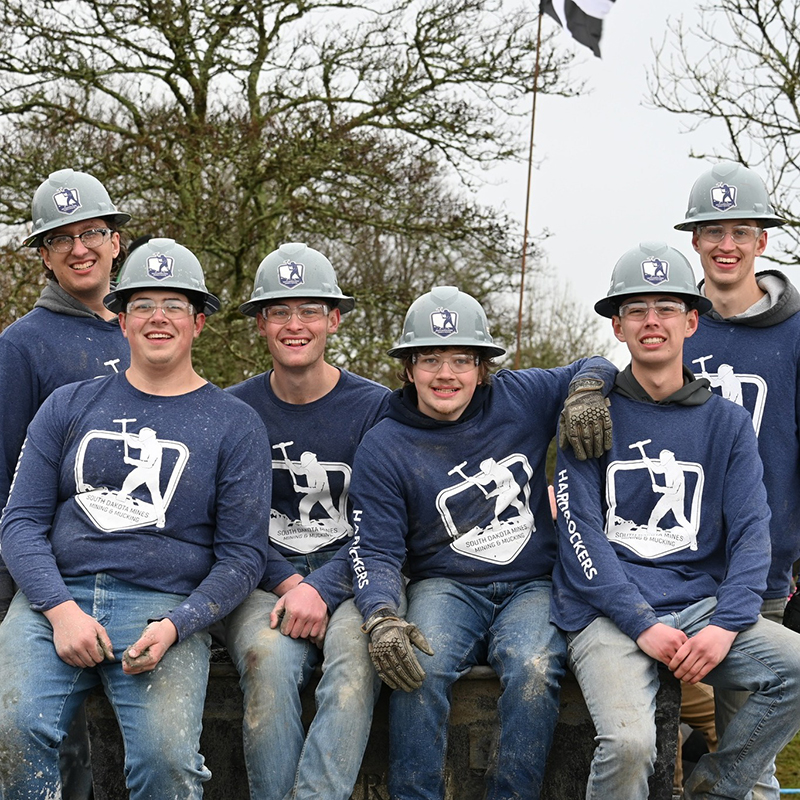
The alumni team, who hasn't practiced since they were students on the team, won the overall alumni division and placed first in jackleg and surveying, second in track stand, and third in hand steel and mucking.
For the Love of Muck
Taking part in the mining and mucking competitions is no easy feat—it’s a gritty, high-stakes challenge that demands serious dedication. Every week, Mines students across all disciplines train tirelessly on their “practice field” high on the hill overlooking campus.
“It is a lot of hard work,” said Dr. Ivy Allard, senior lecturer, business management in technology coordinator and the team advisor. “They practice all year for this one competition where they compete against teams from all over the world.”
The team practices throughout the week, with a fourth practice on Sundays where they
do surveying and jacklegging - specialty categories where only two team members compete,
said Zach Figus, a sophomore mining engineering major and co-ed team captain.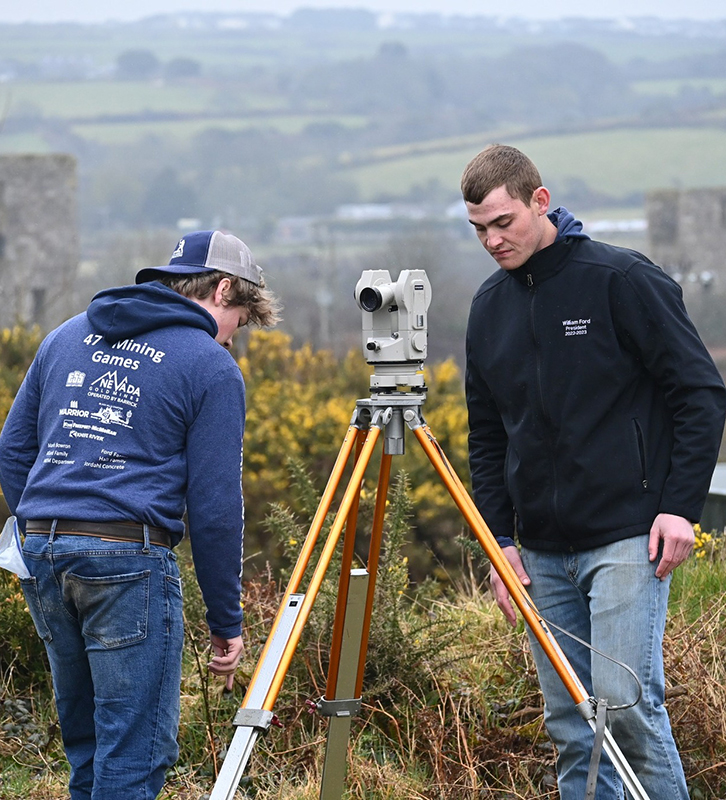
While team members thrive on the physical challenge and skill the competition demands, it’s the camaraderie and time spent together that they truly value.
“The thing I enjoy most about the team is that I get to hang out with a bunch of friends and do fun things four times a week," said Bayley Anderson, a sophomore mining engineer major.
Kockler agreed.
“The best part of the mining and mucking team for me is the people,” she said. “Most
everyone is super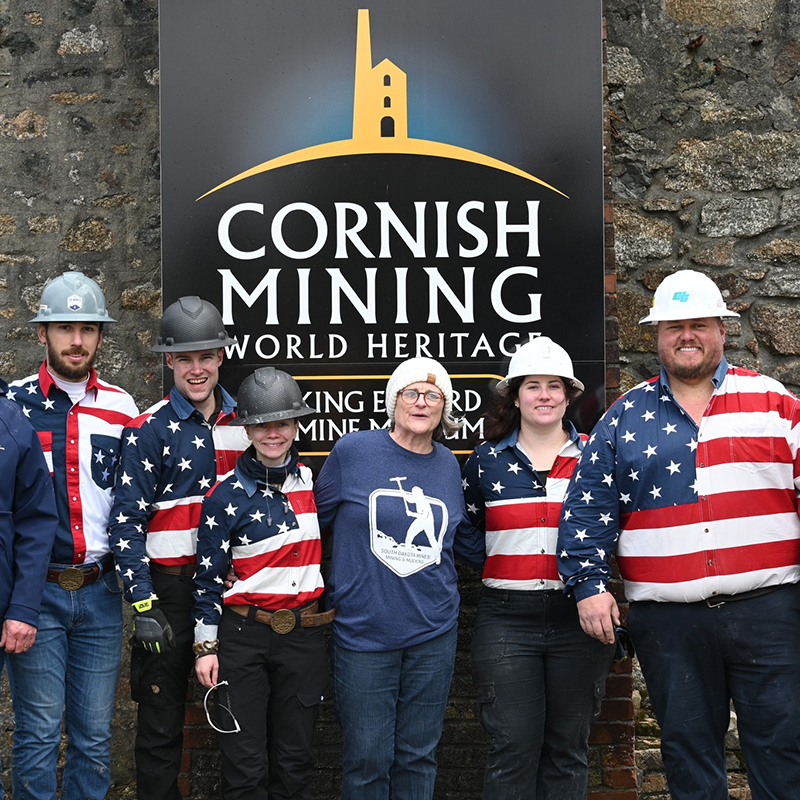 supportive of each other, and it is really inspiring. The team has inspired me to
push myself and grow in strength and as a person.”
supportive of each other, and it is really inspiring. The team has inspired me to
push myself and grow in strength and as a person.”
Kockler and Anderson are the only females on the team. The hope is to one day have an all-female team to compete. Allard said that in the 47 years of the competition, Mines has only taken an all-female team twice.
There’s a special kind of bond that forms when you spend hours side by side, tackling physically and mentally demanding tasks - just ask Brandon Armstrong, a senior mining and geological engineering major and president of the Mining and Mucking Team. With four years on the team, he knows exactly what makes it so unique. “Not many people think shoveling rock as fast as you can is fun—but we all love to do this. We are really a group of friends that muck together.”
The love of the mining competition extends even after graduation. This was the second year Mines sent an alumni team. “The alumni team was all my former muckers,” said Allard, who is in her ninth year of advising the team. “The alumni team was made up of three members who won the same competition as a coed team seven years ago in England.”
In Memory and in Muck
South Dakota Mines is one of the original founding institutions for the Intercollegiate Mining and Mucking Competition, which was created to commemorate the 91 miners who died in the 1972 Sunshine Mine disaster.
In May 1972, a fire broke out at the Sunshine Mine in Kellogg, Idaho. Smoke and carbon monoxide filled the area where the miners were working. At that point in history, the mining disaster was the largest in the hard-rock mining industry since 1917. The Sunshine Fire served as the catalyst for the Mine Safety and Health Act (Mine Act) of 1977, which still governs activities and has substantially decreased the number of mining fatalities.
Mines and the University of Utah, New Mexico Tech, Eastern Washington University, Montana Tech, University of Arizona, Michigan Tech and the University of Idaho, the first host school, participated in the first event in 1978.
The competition, created to be similar to logging contests, honors the memory of the 91 miners but also promotes the skills and camaraderie of mining students worldwide.
The International Collegiate Mining Competition is held in a different location every year. The next three will be held at the University of Arizona, Colorado School of Mines and the 50th at Montana Tech, one of the founding institutions.
The Mines team is already strategizing for the 48th contest.
Muck More Than Competition
While team members learn and practice traditional mining techniques, the spirit of the competition lies in building work ethic and teamwork.
“Wherever they go in life, they will have to work as a team,” Allard said. “During this competition and throughout the year, they all depend on each other.”
The contest also offers a unique networking opportunity. Despite the competitive edge, the atmosphere remains friendly, with students from rival schools connecting over their shared passion.
“The best part was talking to people from all over the world,” said Kockler. “We had a lot of fun and supported each other, no matter the past school rivalries.”
At Mines, students receive hands-on experience with industry-grade equipment, management training and the opportunity to survey and work underground with officials at the Sanford Underground Research Facility. Mining engineering and management students also train with professional rescue teams, intern at major companies across the mining industry and interact with a wide variety of national and international mining experts.
While Mines students are immersed in the latest advancements in mining technology, there's something powerful about stepping into the boots of generations past—testing their grit, embracing the muck, and carrying on a tradition that’s as much about heart as it is about skill.